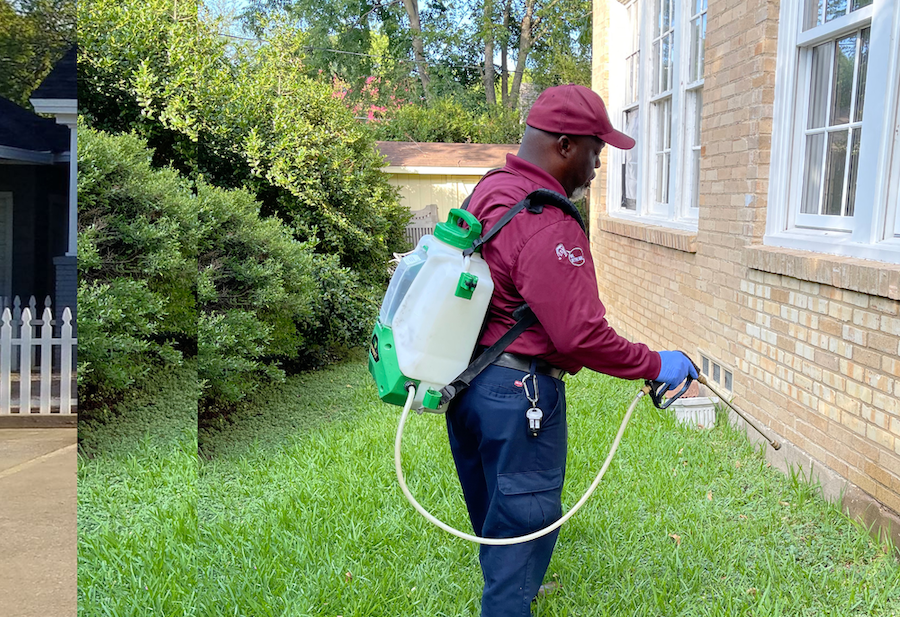Experienced A1 Exterminators Charlotte NC - Rapid and Trusted Solutions
Experienced A1 Exterminators Charlotte NC - Rapid and Trusted Solutions
Blog Article
Bed Bug Treatment Break Down: Comparing Chemical Vs. Non-Chemical Solutions
In the realm of insect control, particularly when taking care of the relentless problem of bed bugs, the option in between chemical and non-chemical therapy options can be an essential one. Both methods provide unique benefits and drawbacks, affecting factors such as performance, security factors to consider, and general cost. By analyzing the nuanced information of each approach, a more clear understanding of which course to go after in dealing with a bed insect problem can be obtained.
Efficiency of Chemical Treatments
Chemical treatments for bed insect problems have been extensively acknowledged for their fast and potent efficiency in eradicating these bugs. When considering the efficiency of chemical treatments, it is crucial to recognize that they can supply a complete and fast option to a bed pest problem.
In addition, chemical therapies have the benefit of supplying residual effects, suggesting that they can remain to remove bed insects also after the initial application. This recurring activity is specifically beneficial in combating any kind of potential re-infestations. In addition, the quick activity of chemical therapies can bring relief to individuals encountering serious bed bug infestations, allowing them to restore control of their space promptly.
Safety Worry About Chemical Solutions
One crucial facet that requires mindful consideration when utilizing chemical services for bed pest therapy is making sure the security of residents and the setting. While chemical therapies can be reliable in eradicating bed insects, they might position threats otherwise dealt with properly. One of the key safety worry about chemical solutions is the prospective injury they can cause to human wellness. Direct exposure to particular chemicals used in bed insect therapies can bring about respiratory issues, skin inflammation, or other unfavorable reactions, particularly in people with pre-existing problems or level of sensitivities. Furthermore, inappropriate application or dosage of chemical pesticides can lead to harmful residues remaining in the cured location, posturing long-term health dangers to passengers.
In addition, the environmental influence of chemical remedies is one more considerable factor to consider. Some pesticides used in bed bug therapies may be harmful to valuable pests, wildlife, and environments if they seep right into the dirt or water systems. It is necessary to use chemical therapies deliberately, adhering to safety standards, and thinking about much less harmful choices to mitigate these dangers and guarantee the safe and efficient management of bed bug problems.
Benefits of Non-Chemical Approaches
Thinking about the prospective safety and security concerns mole pest control and environmental influence connected with chemical remedies for bed bug therapy, checking out non-chemical approaches presents an appealing option with numerous unique benefits. Non-chemical therapies are environmentally friendly, as they do not contribute to air or water contamination, making them a sustainable choice for parasite control.
Furthermore, non-chemical solutions can be reliable in targeting bed bugs, consisting of hard-to-reach areas where chemical therapies may not permeate - A1 bed bug exterminator charlotte. Methods such as heat treatment, vacuuming, vapor cleansing, and mattress coverings provide complete eradication without the usage of harmful chemicals.
Limitations of Non-Chemical Treatments

Furthermore, non-chemical treatments often need several applications to attain successful eradication. This can be taxing and might not always guarantee full removal of all bed insects and their eggs, specifically in surprise or hard-to-reach locations.
Moreover, the success of non-chemical therapies heavily counts on proper implementation and thoroughness, which can be testing for people without professional know-how. Poor application of non-chemical methods may result in insufficient eradication, resulting in consistent invasions and the demand for added therapies.
Consequently, while non-chemical treatments have their benefits, it is necessary to recognize these restrictions and consider them when figuring out one of pop over to this web-site the most efficient technique for taking care of bed insect problems.
Expense Contrast: Chemical Vs. Non-Chemical Options
Given the limitations connected with non-chemical therapies, an essential element to review in the context of bed insect administration is the expense contrast in between chemical and non-chemical options. In contrast, non-chemical therapies like warmth treatment or steam can be a lot more costly, with costs varying from $1,000 to $6,000 for a whole home. While the home bug extermination initial cost of chemical treatments might seem lower, numerous treatments may be required to fully eliminate the invasion, potentially increasing the general price.
Verdict

Thinking about the potential security issues and environmental influence connected with chemical services for bed pest treatment, discovering non-chemical techniques offers an appealing alternative with a number of unique advantages.Given the constraints associated with non-chemical therapies, an important aspect to review in the context of bed insect management is the price contrast in between chemical and non-chemical choices. In comparison, non-chemical treatments like warmth therapy or steam can be a lot more pricey, with costs ranging from $1,000 to $6,000 for an entire home. While the initial price of chemical therapies may seem reduced, multiple treatments might be needed to completely eliminate the infestation, possibly raising the general cost.In conclusion, when comparing chemical and non-chemical bed pest treatment choices, it is vital to think about efficiency, safety and security, benefits, constraints, and cost.
Report this page